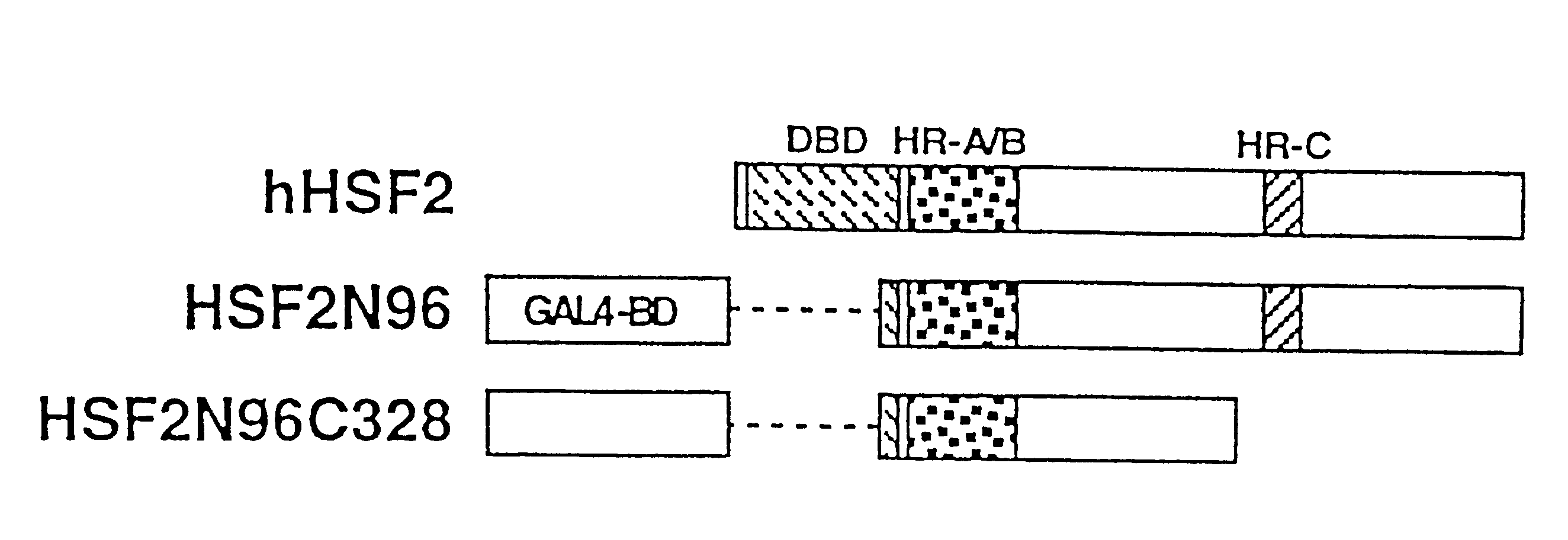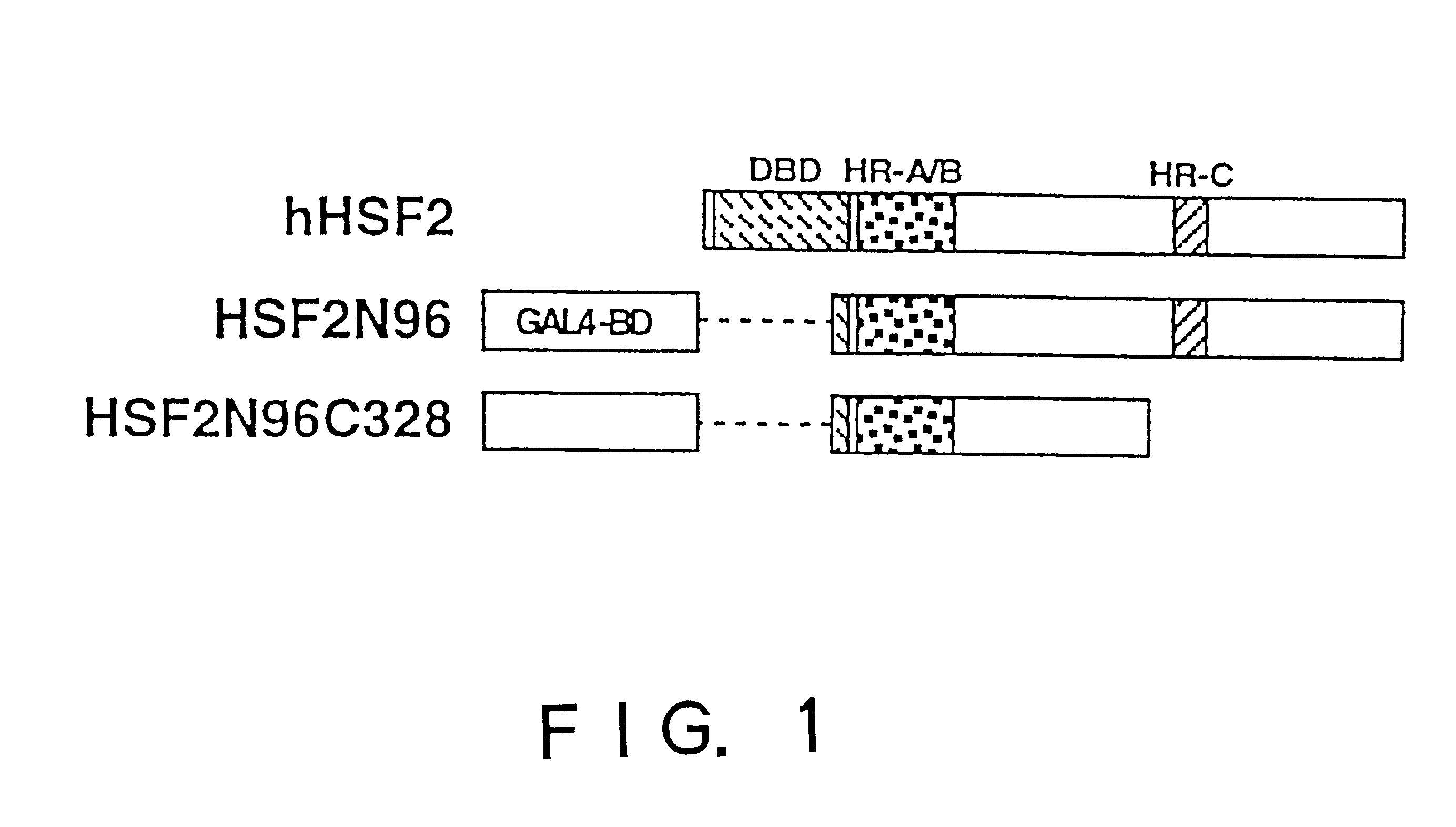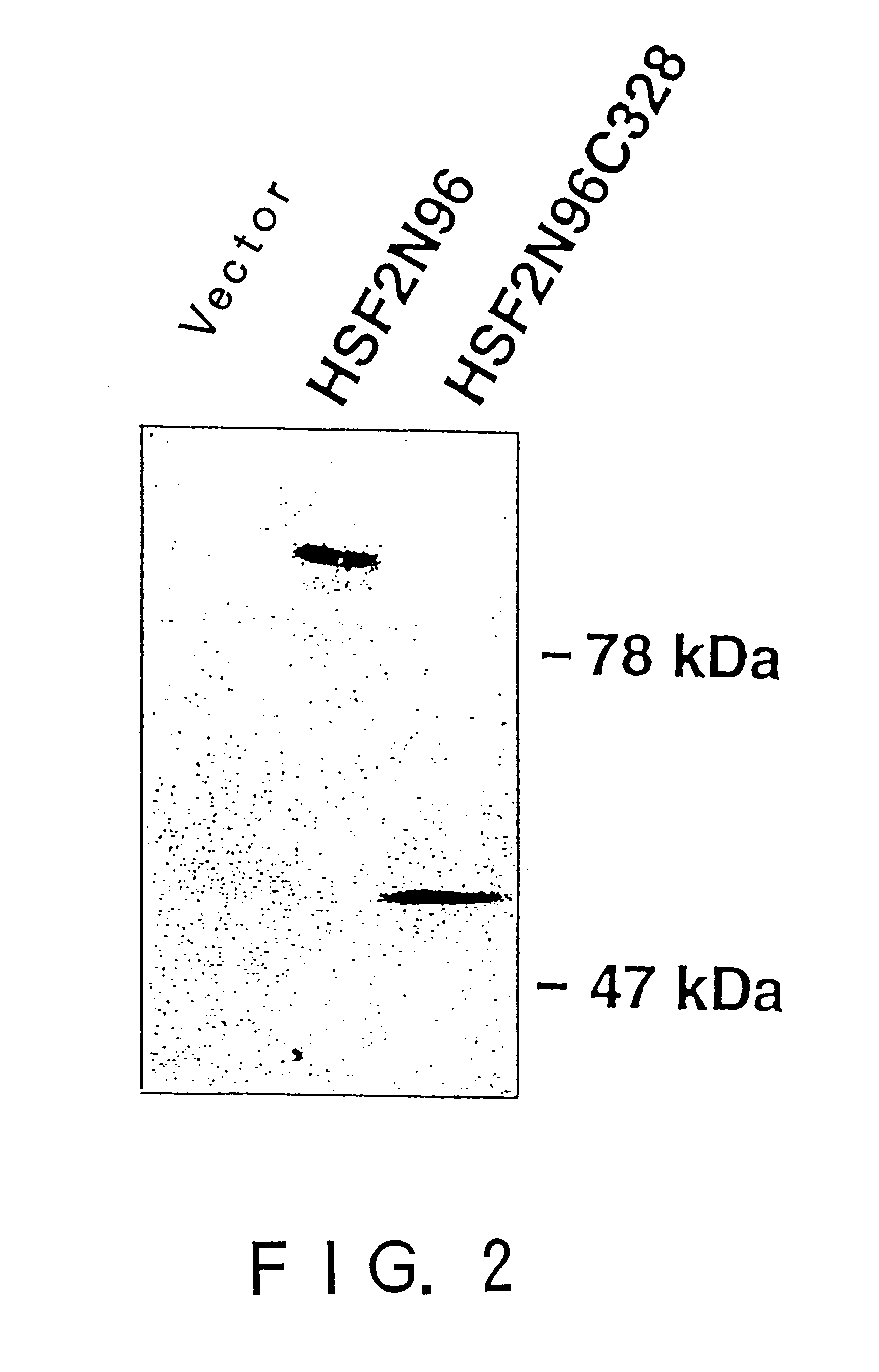Heat shock transcription factor-binding protein
a transcription factor and protein technology, applied in the field of heat shock transcription factor binding protein, can solve the problem that the regulation factor has not yet been known at presen
- Summary
- Abstract
- Description
- Claims
- Application Information
AI Technical Summary
Benefits of technology
Problems solved by technology
Method used
Image
Examples
example 1
(1) Construction of Plasmid
The plasmid phHSF2-1 carrying human HSF2 cDNA was provided by Dr. R. E. Kingston. A human HSF1 cDNA was obtained by RT-PCR method using human brain mRNA (Clontech) as a template, and subcloned into the EcoRI site of pBluescript II (Stratagene). The resulting construct was named phHSF1. The phHSF1 carries nucleotides from -21 to +1704 of the cDNA sequence for human HSF1.
(2) Construction of Bait
In order to screen proteins interacting with HSF2 by yeast two-hybrid screening method, HSF2 deletion mutants were constructed by removing the DNA binding domain and / or the transcriptional activation domain of HSF2 from the above phHSF2-1, thereby removing the possibility of interfering by the transcriptional activity of HSF2 per se. Concretely, phHSF2-1 DNA was cleaved with appropriate restriction enzymes, blunted, if necessary, by Klenow fragment or T4 DNA polymerase, and ligated either with an NcoI linker (8 mer, 10 mer or 12 mer) for N-t...
example 2
Cloning of Full-Length cDNA for HSF2BP
In order to isolate a full length cDNA clone, a human testis cDNA library (.lambda.gt11 containing 1.times.10.sup.6 independent clones, Clontech) was screened by plaque hybridization using the cDNA fragment obtained in item (4) of Example 1 as a .sup.32 P-labeled probe. The longest clone was subcloned into pBluescriptII (Stratagene), and its nucleotide sequence was determined.
The resulting longest cDNA clone had a length of 1916 bp, and contained an open reading frame encoding 334 amino acids (molecular weight 37,644 Daltons), comprising a hydrophilic amino terminal region and a hydrophobic carboxyl terminal region. The protein encoding this cDNA was named HSF2 binding protein (HSF2BP) (FIG. 3). The amino 5 terminal half was deduced to constitute an .alpha.-helix structure, and to contain two leucine zipper motifs (FIG. 4).
example 3
Northern Blot Analysis
RNA blots of multiple human tissues (MTN blot and MTNII blot) purchased from Clontech were hybridized overnight at 42.degree. C. with .sup.32 P-labeled cDNA probes for HSF2BP, HSF2, and glyceraldehydes 3-phosphate dehydrogenase (G3PDH, Clontech) in 5.times.SSPE / 50% formamide / 5.times.Denhardt's solution / 0.1% SDS, washed twice with 0.1.times.SSPE containing 0.1% SDS at 42.degree. C. for 30 minutes, and thereafter subjected to audiography (FIG. 5).
As shown in FIG. 5, it is found that the HSF2BP mRNA is approximately 1.7 kb long, which is testis-specifically expressed. HSF2 is also specifically expressed in testis at a high level as reported elsewhere. Because the constitutive binding of HSF2 to HSE is observed in mouse testis and correlated with the testis-specific expression of HSP70.2 (Sarge, K. D. et al., Biol. Reprod. 50 (1994) 1334-1343), there is suggested a possibility that HSF2BP serves to testis-specifically regulate expression of HSP70.2 by the interacti...
PUM
| Property | Measurement | Unit |
|---|---|---|
| pH | aaaaa | aaaaa |
| heat shock transcription | aaaaa | aaaaa |
| heat shock transcription factor | aaaaa | aaaaa |
Abstract
Description
Claims
Application Information
 Login to View More
Login to View More - R&D
- Intellectual Property
- Life Sciences
- Materials
- Tech Scout
- Unparalleled Data Quality
- Higher Quality Content
- 60% Fewer Hallucinations
Browse by: Latest US Patents, China's latest patents, Technical Efficacy Thesaurus, Application Domain, Technology Topic, Popular Technical Reports.
© 2025 PatSnap. All rights reserved.Legal|Privacy policy|Modern Slavery Act Transparency Statement|Sitemap|About US| Contact US: help@patsnap.com



